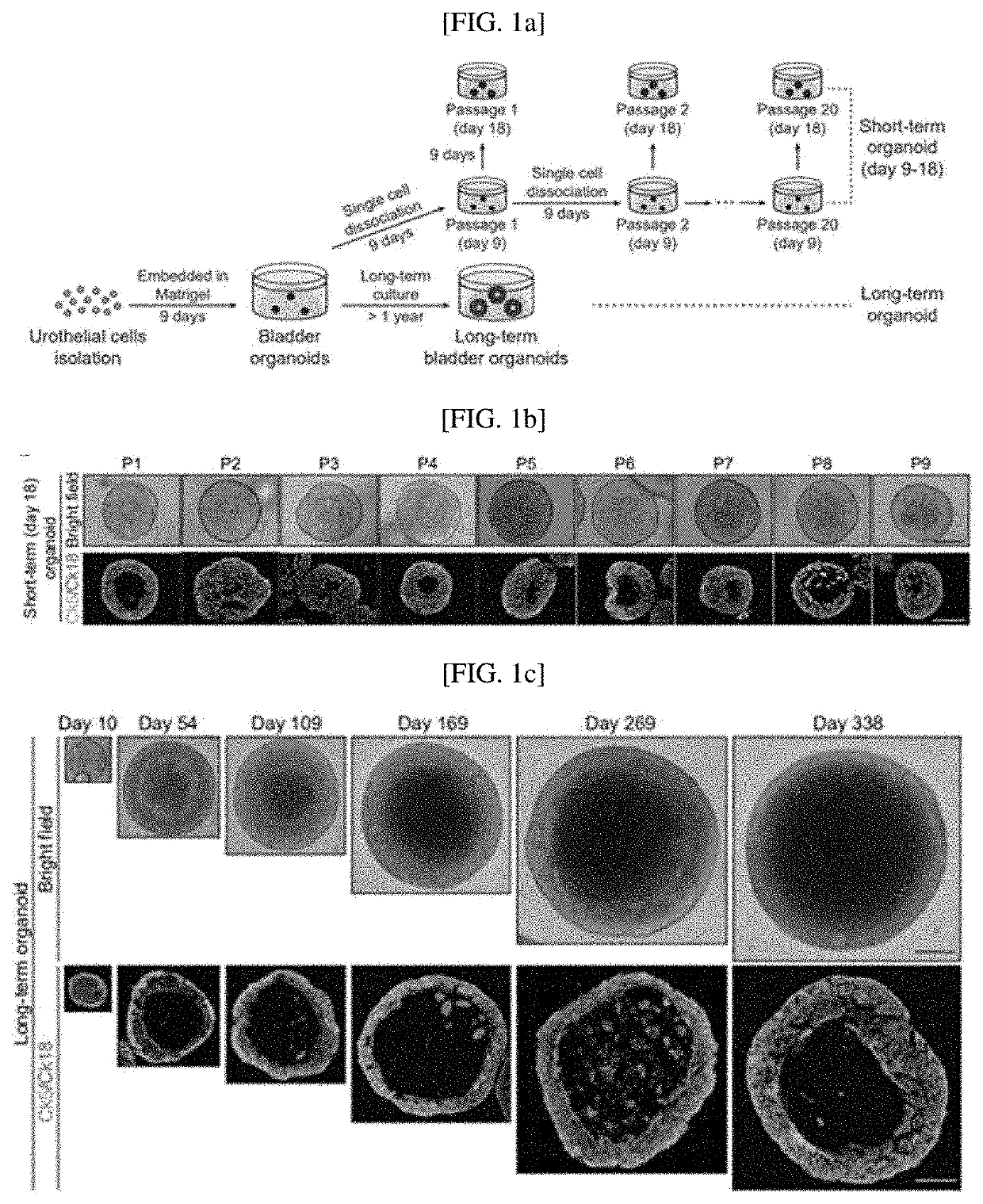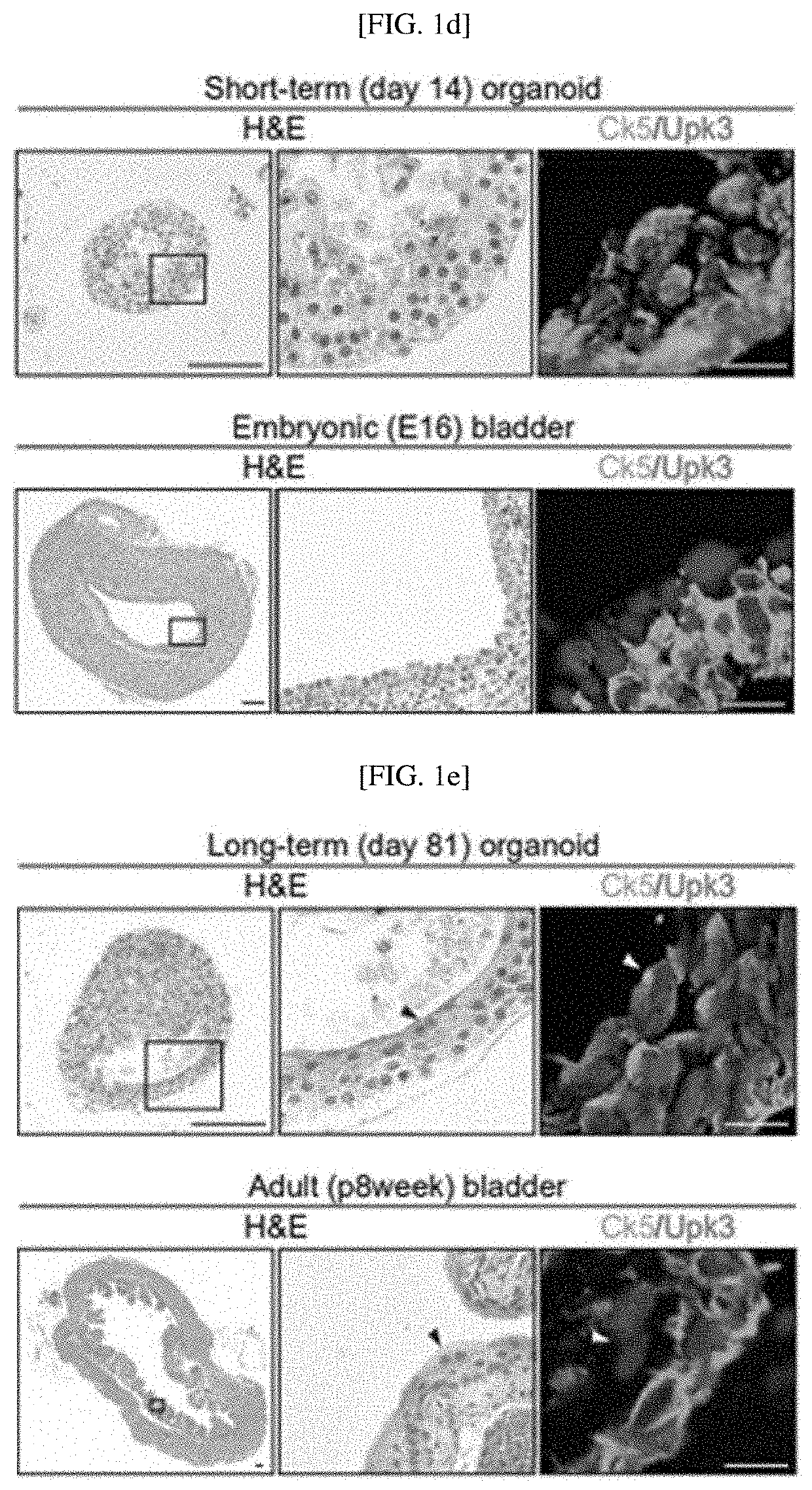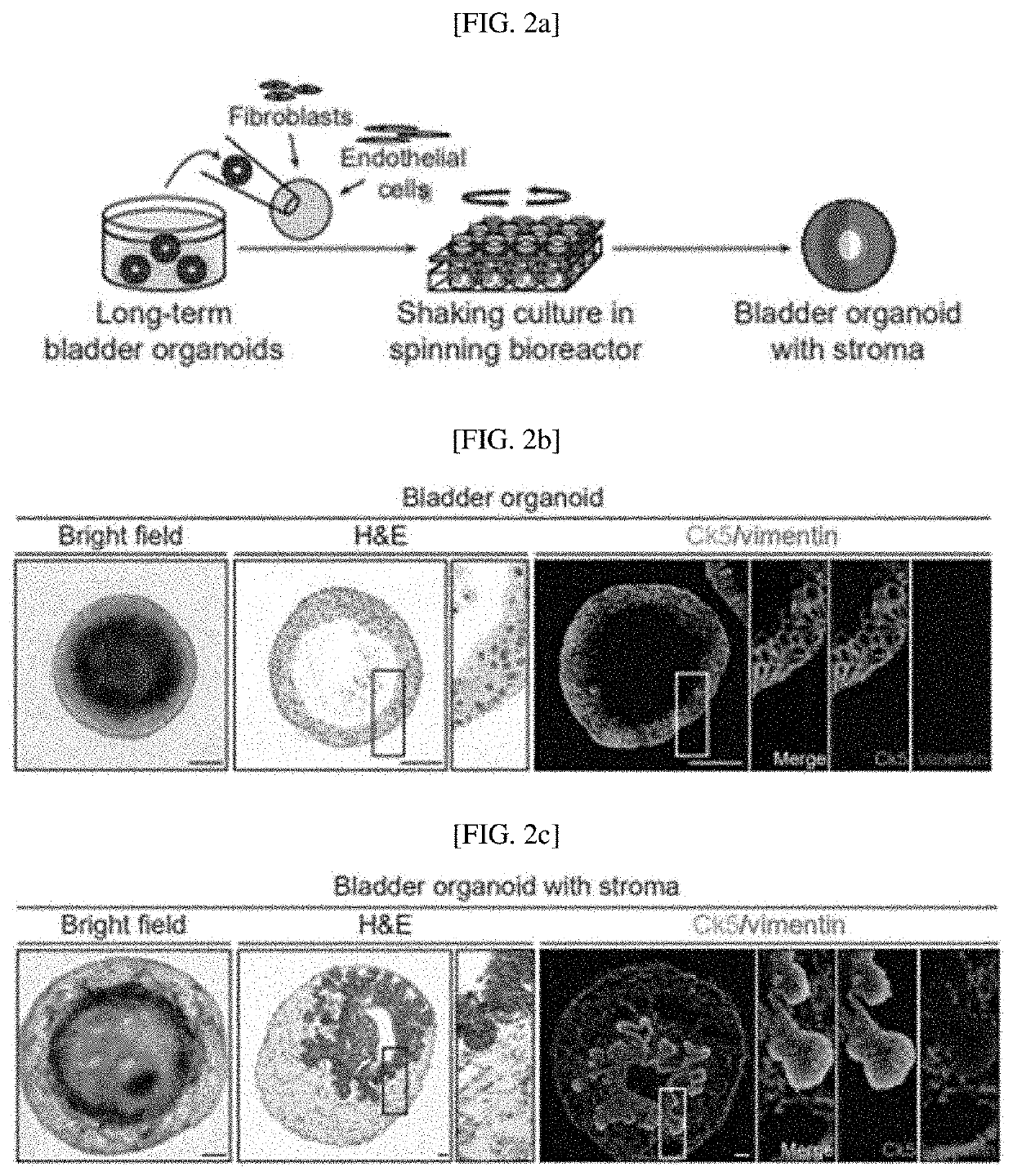Assembloid - 3D mimetic tissue structure based on patient- derived multiple cell types and method of manufacturing the same
a tissue structure and 3d technology, applied in the field of 3d mimetic tissue structure, can solve the problems of inability to explain factors including a microenvironment associated with a disease in vivo, and the inability of psc-derived organoids to be applied to tumor models,
- Summary
- Abstract
- Description
- Claims
- Application Information
AI Technical Summary
Benefits of technology
Problems solved by technology
Method used
Image
Examples
example 1
on and Methods for Experiments
[0070]1-1. Mice
[0071]For lineage tracing experiments, CK5CreERT2 (JAX: 018394) mice were crossed with R26Rainbow / Rainbow mice to obtain CK5CreERT2; R26Rainbow / Rainbow mice. Unless particularly stated, in all other experiments, C57BL / 6 mice were used. In each experiment, mice were randomly selected from a cage for drug treatment. Procedures were performed under isoflurane anesthesia using a standard vaporizer. All procedures were performed according to the protocols approved by the Institutional Animal Care and Use Committee at POSTECH (IACUC number: POSTECH-2019-0055).
[0072]1-2. Human Bladder Tumor Samples
[0073]Human bladder tumor samples were obtained from the tissue bank of Seoul National University Hospital (SNUH). 0.5 to 1 cm3 specimens of bladder tumor tissue were acquired from patients undergoing TURB or a cystectomy according to a protocol approved by the SNUH Institutional Review Board (IRB). The tumor samples were transported to POSTECH after c...
example 2
ion of Mimetic Property of the Urothelium of Native Bladder by Long-Term Cultured Bladder Organoid
[0107]2-1. Confirmation of Mature Bladder Tissue Differentiation of Urothelial Stem Cell
[0108]To confirm urothelial stem cells capable of forming a bladder tissue structure in vitro, and confirm whether organoids generated by the stem cells develop into mature bladder tissue including multiple layers of similarly differentiated epithelial cells as mature bladder tissue in vivo, as shown in FIG. 1A, two culture systems maintaining bladder organoids for a long time were established. For long-term serial passaging of short-term cultured organoids, as shown in FIG. 8A, primary bladder organoids generated by culturing single urothelial stem cells cultured in a 3D environment for 7 to 9 days were dissociated into single cells, and subcultured to form new bladder organoids. This process was repeated twenty times for 6 months, and as shown in FIG. 8B, it was confirmed that bladder tissue was su...
example 3
ion of In Vivo Bladder-Like Tissue Structure and Physiological Activity of In Vitro Reconstituted Three-Layered Miniature Bladder
[0117]3-1. Confirmation of In Vivo Bladder-Like Tissue Structure of In Vitro Reconstituted Three-Layered Miniature Bladder
[0118]The inventors intended to determine that tissue stroma is a critical tissue component serving as a gap between stem cells for stimulating cell proliferation and differentiation and providing structural support, and to develop bladder organoids including tissue stroma. As shown in FIG. 2A, to mimic urothelial cells including mature stroma, bladder organoids cultured for a long period of over 200 days were reconstituted with two components of tissue stroma, such as fibroblasts and endothelial cells. In addition, as shown in FIG. 9A, to promote the growth and organization of bladder organoids with stroma, reconstituted organoids were cultured in a spinning bioreactor developed using 3D printing.
[0119]The cultured organoids were analy...
PUM
| Property | Measurement | Unit |
|---|---|---|
| pH | aaaaa | aaaaa |
| pressure | aaaaa | aaaaa |
| pressure | aaaaa | aaaaa |
Abstract
Description
Claims
Application Information
 Login to View More
Login to View More - R&D
- Intellectual Property
- Life Sciences
- Materials
- Tech Scout
- Unparalleled Data Quality
- Higher Quality Content
- 60% Fewer Hallucinations
Browse by: Latest US Patents, China's latest patents, Technical Efficacy Thesaurus, Application Domain, Technology Topic, Popular Technical Reports.
© 2025 PatSnap. All rights reserved.Legal|Privacy policy|Modern Slavery Act Transparency Statement|Sitemap|About US| Contact US: help@patsnap.com



